Gaocheng Observatory: A Journey Through Time and Space in China’s Historical Astronomy
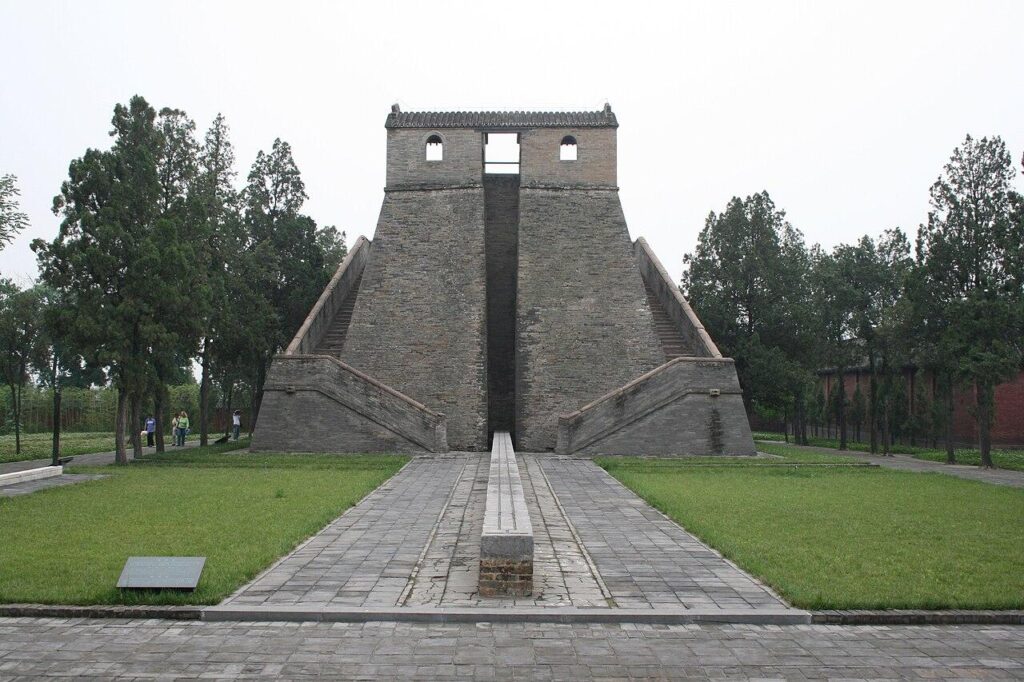
An Essential Guide to Visiting Gaocheng Observatory
In This Guide
- An Essential Guide to Visiting Gaocheng Observatory
- The Rich History and Legends of Gaocheng Observatory
- Main Highlights: What You Absolutely Can’t Miss
- Planning Your Visit: A Practical Guide
- Tickets: Prices, Booking, and Tips
- How to Get There: A Complete Transportation Guide
- Local Cuisine and Accommodation Nearby
- Frequently Asked Questions
- Final Thoughts on Your Trip
Nestled in the historic city of Dengfeng, the Gaocheng Observatory (登封观星台) stands as a testament to China’s rich astronomical heritage. Constructed during the Ming Dynasty in 1276, this ancient observatory is not just a relic of the past but a fascinating glimpse into the sophisticated astronomical practices of early Chinese scholars. As part of a UNESCO World Heritage Site cluster, the observatory offers an intriguing opportunity for international travelers to explore the intersection of science, history, and culture.
While the Gaocheng Observatory may not be as crowded as nearby attractions like the Shaolin Temple, its unique charm lies in its serene atmosphere and the remnants of its storied past. Visitors can witness ancient astronomical instruments that were once used to measure time and celestial events, providing insight into how early Chinese astronomers navigated the cosmos with remarkable precision. The observatory’s sundial, for instance, remains a point of interest where you can reflect on the ingenuity of ancient science.

Gaocheng Observatory.
What to Expect
-
Historical Significance: Learn about the observatory’s role in the advancement of Chinese astronomy and its importance in understanding the Earth’s rotation and the passage of time.
-
Sublime Scenery: Enjoy the quiet ambiance surrounded by the natural beauty of Dengfeng, making it a perfect spot for contemplation and photography.
-
Fascinating Artifacts: The observatory houses several ancient instruments, including the Zhou Gong Shadow Measuring Table and the Yang Apparatus, offering a glimpse into the technological advancements of the era.
Visiting Tips
-
Timing Your Visit: The observatory is open 24 hours, making it accessible for those who wish to enjoy the tranquility of the site at dawn or dusk.
-
Transportation: While it may take about an hour by taxi from central Dengfeng, the journey is part of the adventure. Be prepared for potential fare discussions with local drivers.
-
Engagement: Although the site may seem quiet, take the time to engage with the surroundings. The absence of crowds allows for a personal connection to this historical landmark.
Whether you are an astronomy enthusiast, a history buff, or simply a curious traveler, the Gaocheng Observatory promises a unique experience that encapsulates the spirit of ancient Chinese scientific inquiry. Embrace the stillness, reflect on the past, and marvel at the wonders of the universe from this historic vantage point.
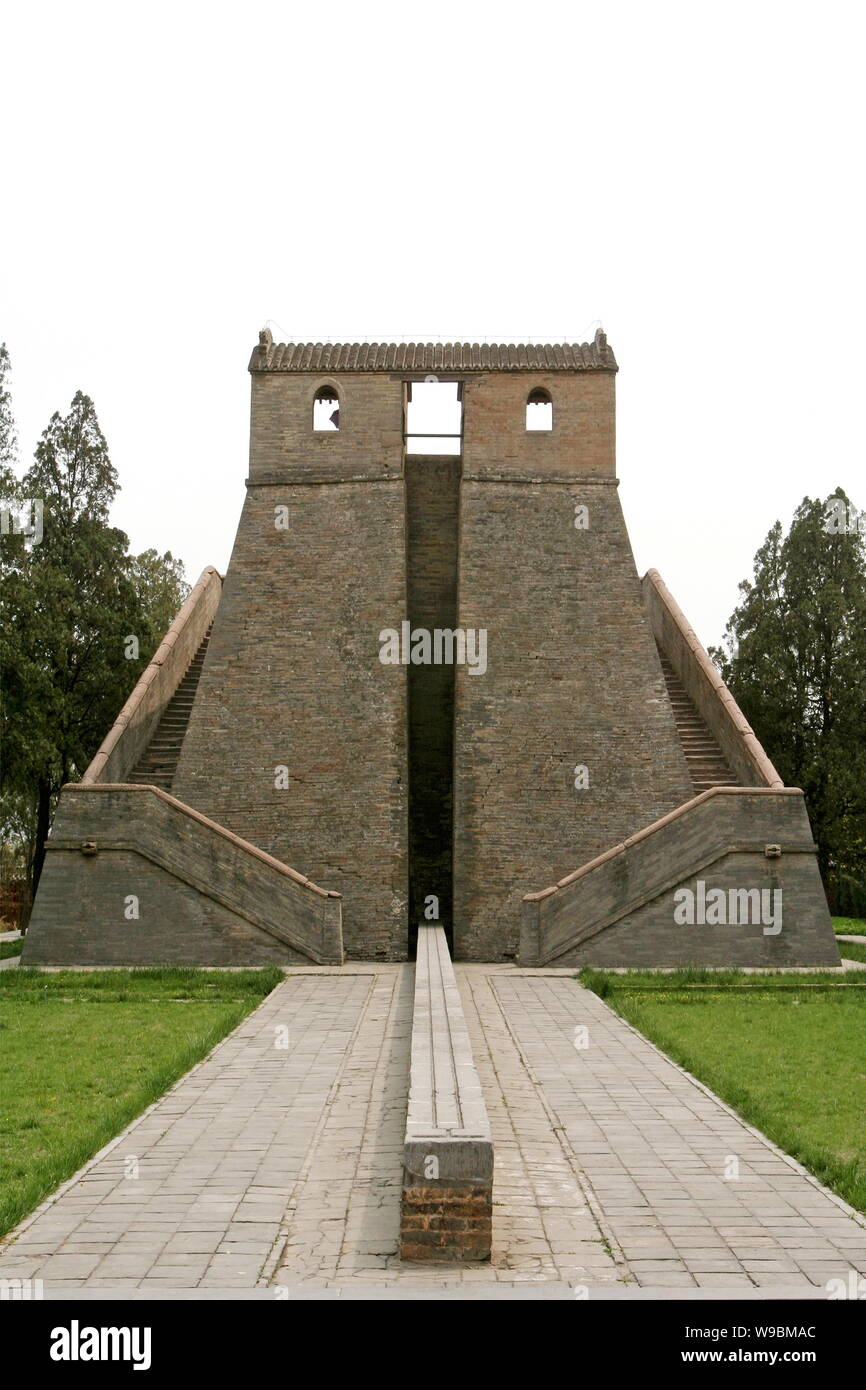
Gaocheng Observatory.
The Rich History and Legends of Gaocheng Observatory
A Journey Through Time: The Fascinating History and Legends of Gaocheng Observatory
Nestled in the historical town of Dengfeng, the Gaocheng Observatory (登封观星台) stands as a testament to China’s rich astronomical heritage. While it may not be the most frequented tourist destination, its significance in the annals of Chinese history and science makes it a remarkable site to explore.
Historical Significance
Constructed during the Jin Dynasty (1115-1234), Gaocheng Observatory is one of the oldest astronomical observatories in the world. It was commissioned by the renowned astronomer Guo Shoujing, who played a pivotal role in the development of ancient Chinese astronomy. Guo Shoujing is credited with creating accurate calendars and measuring time, which were essential for agricultural planning and societal organization.

Gaocheng Observatory.
The observatory features several impressive instruments, including the sundial, which was instrumental in determining the length of a day to within an astonishing 12 seconds of modern measurements. This level of precision demonstrates the advanced understanding of astronomy that existed in China centuries ago. The observatory also bears scars from its tumultuous past, including two notable dents from Japanese artillery during World War II, which serve as physical reminders of the conflicts that have shaped the region.
Legends and Cultural Impact
As with many historical sites in China, Gaocheng Observatory is steeped in legends that reflect its cultural significance. One popular tale speaks of Guo Shoujing himself, who, upon realizing the limitations of traditional astronomical methods, sought to develop instruments that could accurately track celestial bodies. It is said that he communed with the heavens, receiving divine inspiration that enabled him to construct the observatory, transforming it into a bridge between the earthly realm and the cosmos.
The observatory has also inspired poets and scholars throughout the centuries. The beauty of the night sky, combined with the wisdom of ancient astronomers, has fueled countless literary works, enhancing the cultural tapestry of China. Visitors often find themselves reflecting on the profound connection between humanity and the universe, a theme that resonates deeply within the framework of Chinese philosophy.

Gaocheng Observatory.
Visiting the Gaocheng Observatory
While the Gaocheng Observatory may appear somewhat deserted at times, its quiet ambiance offers an opportunity for contemplation and exploration. The entrance is free, making it an accessible destination for travelers eager to delve into China’s astronomical past. Although some visitors have noted the lack of extensive exhibits or crowds, the observatory’s serene setting allows for a personal experience steeped in history.
For those intrigued by engineering and physics, the observatory’s ancient instruments provide a fascinating glimpse into the scientific achievements of the past. It’s a place where one can appreciate the intersection of art, science, and history, all under the vast embrace of the sky.
Conclusion
The Gaocheng Observatory is not merely an ancient structure; it is a portal to the past, revealing the brilliance of Chinese astronomical knowledge and the legends that surround it. As you stand amidst its storied walls, allow yourself to be swept away by the narratives of those who once gazed at the stars from this very location. Embrace the quiet majesty of the observatory, and let it inspire your own reflections on the cosmos.
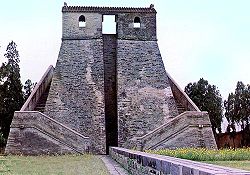
Gaocheng Observatory.
Main Highlights: What You Absolutely Can’t Miss
When visiting the Gaocheng Observatory (登封观星台), it’s essential to embrace its historical significance and unique features that make it a noteworthy stop in Dengfeng, Henan Province. This site is not only an astronomical marvel but also a testament to ancient Chinese ingenuity in the realm of science and engineering. Here’s a guide to the main highlights of this fascinating site.
Historical Significance
-
A UNESCO World Heritage Site: Part of the larger cluster of historical sites in Dengfeng that emphasize China’s rich cultural heritage, Gaocheng Observatory stands out as a premier example of ancient astronomical observation.
-
Ancient Astronomy: Established during the Yuan Dynasty (1271-1368), the observatory was instrumental in refining Chinese astronomical systems and practices. It allowed scholars to measure the passage of time and the progression of seasons with remarkable accuracy.
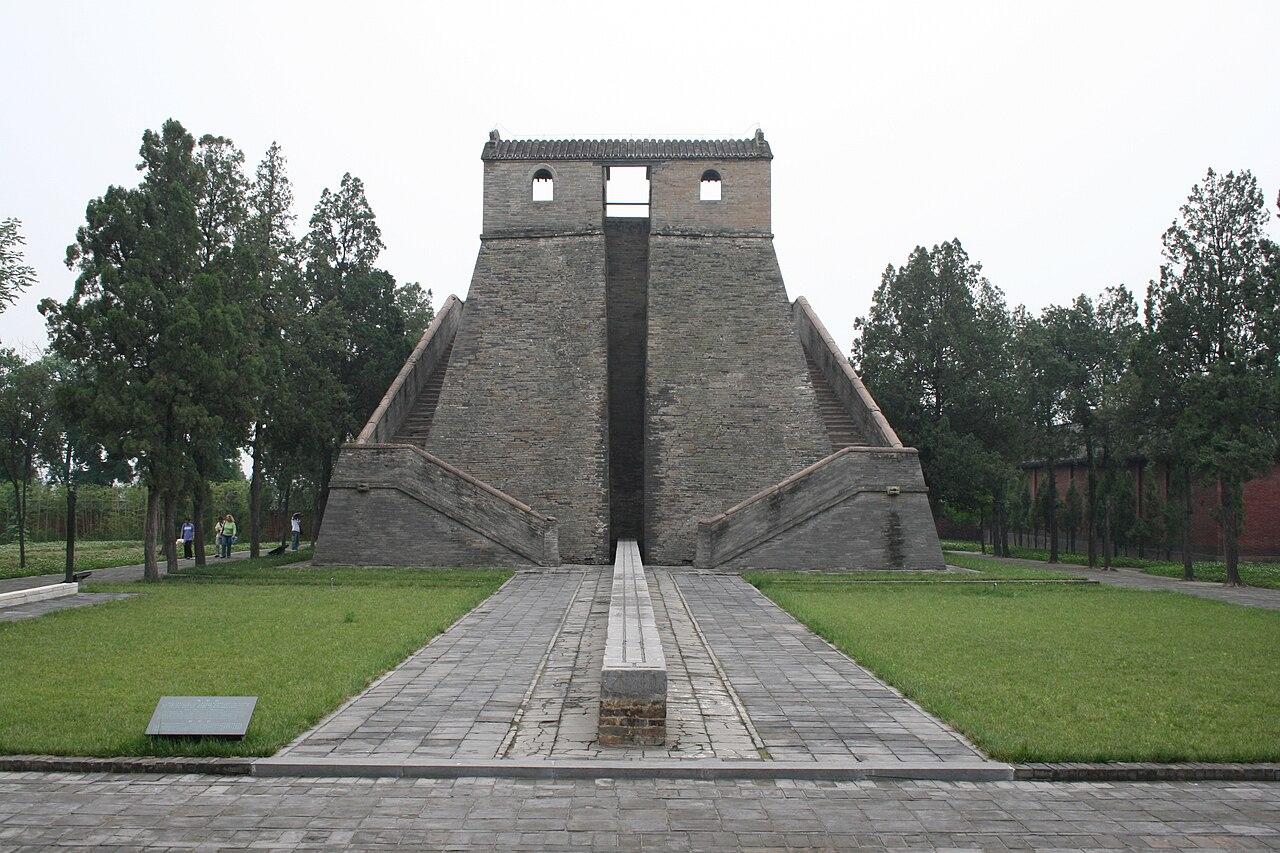
Gaocheng Observatory.
Architectural Features
-
The Main Structure: The observatory features a large circular platform, designed specifically for solar observations. Its architecture reflects the astronomical principles of the time, showcasing the advanced understanding of celestial mechanics by ancient Chinese astronomers.
-
The Sundial: Central to the observatory is a magnificent sundial, which was used to track time based on the position of the sun. This instrument remains a focal point for visitors, illustrating the practical applications of astronomy in daily life during ancient times.
-
Historical Damage: Visitors can observe two distinct dents on the structure, remnants of World War II bombing, which serve as poignant reminders of the observatory’s tumultuous history.
Visitor Experience
-
A Peaceful Retreat: Unlike more crowded tourist destinations, Gaocheng Observatory offers a tranquil experience, often allowing visitors to explore the site with fewer distractions. It’s an ideal spot for those interested in history, architecture, and astronomy alike.
-
Educational Opportunities: The observatory houses several important astronomical instruments and models that provide insights into ancient techniques of celestial observation. While English explanations may be limited, the visual elements are compelling and informative.
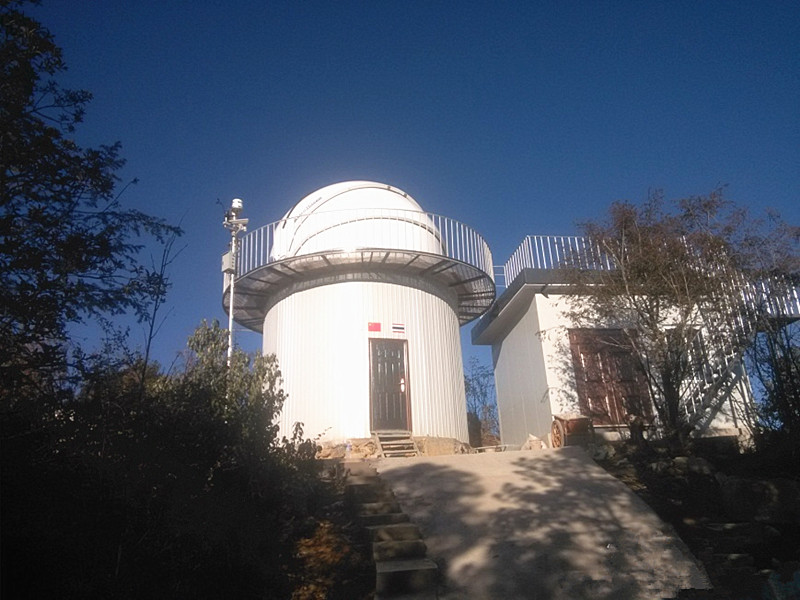
Gaocheng Observatory.
Practical Tips
-
Location: Situated just outside Dengfeng, accessing the observatory may require a taxi ride of about an hour. Ensure clear communication with your driver regarding fare to avoid disputes.
-
Entry Fee: Admission to the Gaocheng Observatory is free, making it a budget-friendly option for travelers keen on exploring historical sites.
-
Timing Your Visit: Consider visiting during the late afternoon to enjoy the sunset views from the observatory, which can be particularly stunning against the backdrop of the surrounding landscape.
Nearby Attractions
-
Shaolin Temple: Just a short distance away, the legendary Shaolin Temple is a must-visit for those interested in martial arts and Buddhist culture. It provides a contrasting experience to the calm of the observatory.
-
Zhongyue Temple and Pagoda Forest: These nearby historic sites offer additional context to the rich cultural tapestry of the region, providing further opportunities for exploration and discovery.
In Conclusion
Gaocheng Observatory is a hidden gem for those interested in ancient Chinese history and astronomy. Its serene atmosphere, combined with its rich cultural significance, makes it a worthwhile stop on your journey through Dengfeng. Whether you are an astronomy enthusiast, a history buff, or simply seeking a unique experience, the observatory offers a glimpse into the profound intellectual achievements of ancient China.
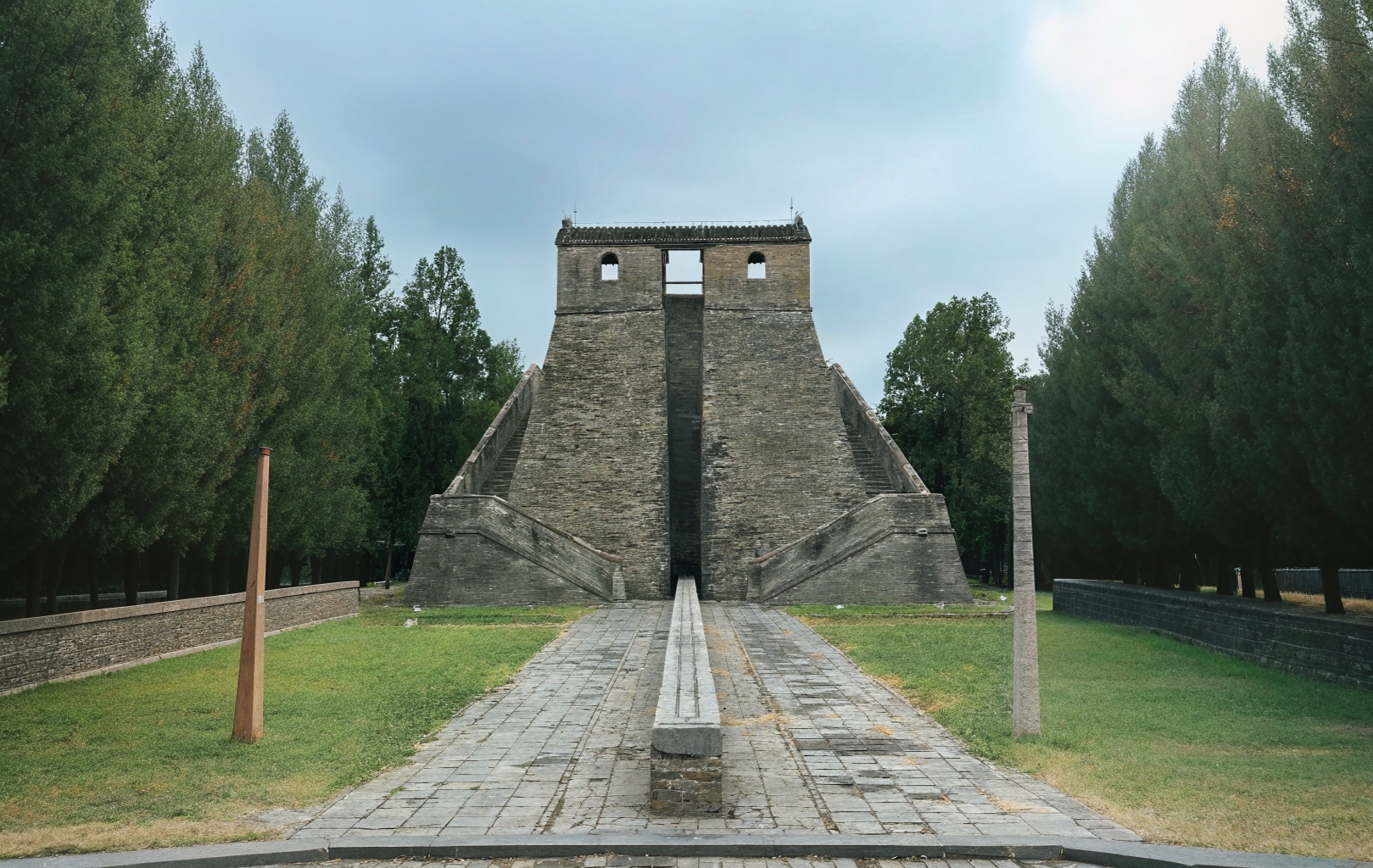
Gaocheng Observatory.
Planning Your Visit: A Practical Guide
Essential Information for Visiting Gaocheng Observatory
Nestled in the historical city of Dengfeng, the Gaocheng Observatory (登封观星台) is a unique site that offers insight into China’s rich astronomical heritage. As one of the oldest astronomical observatories in the world, it is an essential stop for those interested in the intersection of science, history, and culture. Here’s everything you need to know to make the most of your visit.
Location and Getting There
- Address: Gaocheng Town, Dengfeng, Henan Province, 452477, China.
- Transportation:
- The observatory is approximately a one-hour taxi ride from the center of Dengfeng.
- It is advisable to confirm the fare with your taxi driver beforehand to avoid any disputes.
- For those who prefer public transport, local buses may be available, but check the current schedules.
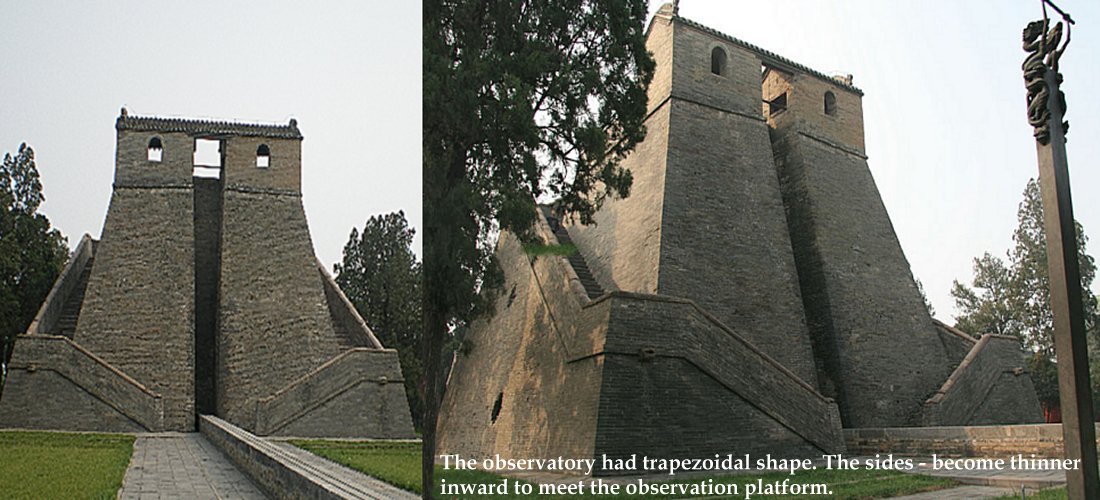
Gaocheng Observatory.
Opening Hours
The observatory is open 24 hours a day, allowing you to explore at your convenience. However, visiting during daylight hours is recommended for the best experience.
Admission Fees
- Entrance Fee: Free. This accessibility makes it a great addition to your itinerary without straining your budget.
What to Expect
- Historical Significance: Built in 1276, the Gaocheng Observatory is a testament to the advanced astronomical techniques of ancient China. Here, you can observe various astronomical instruments, including sundials and celestial globes that were used for timekeeping and navigation.
- Architectural Features: The site features two notable dents left by Japanese artillery during World War II, serving as reminders of the historical tumult China has endured.
- Visitor Experience:
- The observatory tends to be less crowded, providing a peaceful environment for exploration.
- Expect a short visit, as there are limited interactive displays and information available in English. Visitors have noted that it is a fascinating spot for those interested in engineering and history, but it may not captivate younger children or those without a keen interest in astronomy.
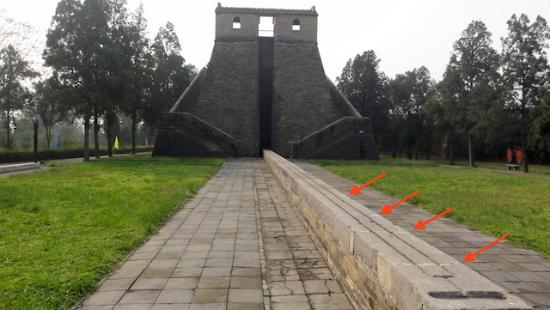
Gaocheng Observatory.
Nearby Attractions
While in Dengfeng, consider visiting other historical sites, including:
- Shaolin Temple: Famous for its martial arts, this temple is a must-see and is located nearby.
- Pagoda Forest of Shaolin Temple: A unique collection of pagodas, showcasing ancient Chinese architecture.
- Zhongyue Temple: A significant religious site with beautiful surroundings.
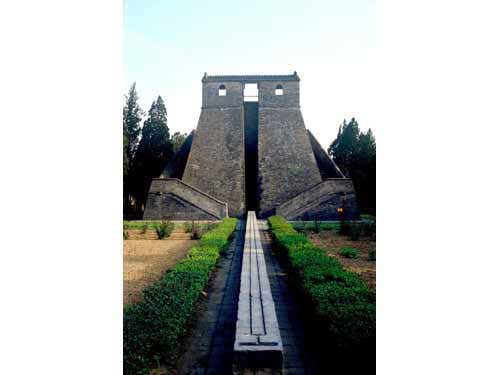
Gaocheng Observatory.
Tips for Your Visit
- Plan for Limited Amenities: The observatory lacks extensive facilities, so consider bringing water and snacks.
- Photography: The site offers great opportunities for photography, especially of the ancient instruments and the surrounding scenery.
- Respect Local Customs: As with any historical site in China, be respectful of the environment and other visitors.
Best Time to Visit
The ideal time to visit is during spring and autumn when the weather is mild, making for a comfortable exploration experience. However, be mindful of air quality, as pollution can affect visibility and your overall enjoyment of the site.
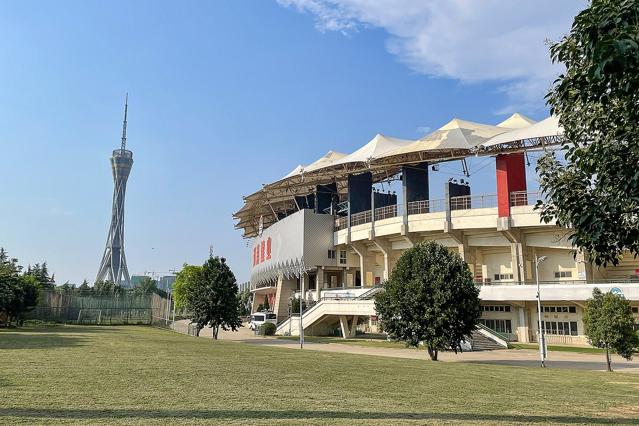
Gaocheng Observatory.
Final Thoughts
Gaocheng Observatory is more than just an astronomical site; it is a window into the historical advancements of Chinese science and culture. Whether you are a history buff, an astronomy enthusiast, or simply looking for a unique experience in Dengfeng, this observatory deserves a spot on your travel itinerary. Enjoy your visit and take a moment to appreciate the legacy of human curiosity that this remarkable site represents!
Tickets: Prices, Booking, and Tips
Exploring Gaocheng Observatory: Ticket Information and Practical Tips
Visiting the Gaocheng Astronomical Observatory (登封观星台) offers a unique glimpse into China’s rich history of astronomical study. As you plan your excursion to this remarkable UNESCO World Heritage site, here’s everything you need to know about tickets, booking, and tips to make the most of your visit.
Admission Fees
One of the most appealing aspects of Gaocheng Observatory is that entrance is free. This accessibility allows travelers to explore the historical significance of the site without the burden of ticket costs, making it an excellent addition to your itinerary, especially if you’re passionate about history and culture.
Opening Hours
The observatory is open 24 hours a day, allowing visitors the flexibility to explore at their convenience. However, for the best experience, consider visiting during daylight hours to fully appreciate the site’s significant astronomical instruments and the surrounding landscape.
Getting There
Reaching Gaocheng Observatory can be a bit of an adventure. It is approximately a one-hour taxi ride from Dengfeng city center. As you navigate this journey, keep in mind that taxi drivers may not always have a clear understanding of the destination, so having the name and address written in Chinese could be very helpful.
Tips for Your Visit
-
Time Your Visit: While the site is free to enter, it is recommended to allocate about 1-2 hours for your visit. This time frame allows sufficient opportunity to explore the sundial and the other astronomical instruments, as well as to take in the site’s historical context.
-
Consider Your Interests: If you are an enthusiast of engineering, astronomy, or Chinese history, you may find the observatory particularly fascinating. Conversely, if these subjects do not pique your interest, you may want to pair your visit with other nearby attractions, such as the Shaolin Temple, to enhance your experience in the region.
-
Expect Fewer Crowds: Gaocheng Observatory sees relatively few visitors, which can make for a serene exploration. However, this also means that resources such as English-language explanations may be limited. Bringing along a guidebook or downloading a history app could enrich your understanding during your visit.
-
Photography Opportunities: The observatory itself, along with its sundial and the remnants of war damage, offers unique photography opportunities. Be sure to capture the fascinating juxtaposition of ancient science and the natural beauty surrounding the site.
-
Nearby Attractions: Consider pairing your visit to the observatory with other nearby historical sites such as the Zhou Gong Shadow Measuring Table and the Yang Apparatus, both of which provide further insights into China’s astronomical advancements.
With its free admission and rich historical significance, the Gaocheng Observatory stands as a must-see destination for travelers eager to delve into the depths of Chinese scientific history. Enjoy your exploration of this celestial gem!
How to Get There: A Complete Transportation Guide
Getting to Gaocheng Observatory: Your Comprehensive Transportation Guide
Embarking on a journey to the Gaocheng Astronomical Observatory (登封观星台) is a step into China’s rich historical and scientific legacy. Located in Dengfeng, Henan Province, this ancient observatory is a must-visit for those intrigued by astronomy, history, and culture. Here’s how you can reach this fascinating site with ease.
1. Arrival in Dengfeng
Before heading to the observatory, you’ll first need to arrive in Dengfeng. Here are the primary transportation options:
-
By Air: The nearest major airport is Zhengzhou Xinzheng International Airport (CGO), located about 70 kilometers (approximately 43 miles) from Dengfeng. From the airport, you can take a taxi or a shuttle bus to get to the city.
-
By Train: Dengfeng is also accessible via train. The Dengfeng Railway Station connects the city to major cities like Zhengzhou and Luoyang. High-speed trains from Zhengzhou East Railway Station to Dengfeng take about 30 minutes.
-
By Bus: Long-distance buses from Zhengzhou or Luoyang frequently service Dengfeng. The bus ride offers a scenic view of the Henan countryside.
2. Local Transportation to Gaocheng Observatory
Once you are in Dengfeng, reaching the Gaocheng Observatory is straightforward:
-
Taxi: The most convenient way to reach the observatory is by taxi. Taxis in Dengfeng are relatively inexpensive and can take you directly to the observatory. The drive typically takes about 30 minutes from the city center.
-
Ride-Hailing Services: If you prefer using a mobile app, services like Didi Chuxing operate in Dengfeng. Simply enter your destination, and a driver will pick you up.
-
Public Bus: For those on a budget, local buses do run to the Gaocheng Observatory. However, they may require transfers and are less reliable in terms of schedules.
3. Tips for a Smooth Journey
-
Language Barrier: While some taxi drivers may understand basic English, it’s advisable to have your destination written in Chinese: 登封观星台.
-
Cash: Make sure to carry some cash, as not all taxis or small businesses accept credit cards.
-
Timing Your Visit: The observatory is open 24 hours, but it’s best to visit during daylight hours for a clearer view of the site and its instruments.
-
Planning Your Return: Arrange your return transportation ahead of time, especially if you’re planning to visit during peak tourist seasons when taxis might be harder to come by.
4. Nearby Attractions
While you’re in the area, consider exploring other nearby historical sites:
-
Shaolin Temple: Just a short drive away, this iconic temple is the birthplace of Shaolin Kung Fu and is a UNESCO World Heritage Site.
-
Pagoda Forest of Shaolin Temple: A stunning collection of ancient pagodas, this site is perfect for history enthusiasts and photographers alike.
Exploring Gaocheng Observatory offers a unique glimpse into China’s astronomical achievements and cultural heritage. With this guide, you’re well-equipped to make the most of your visit to this historical gem. Safe travels!
Local Cuisine and Accommodation Nearby
Savoring Local Flavors and Finding Comfort Nearby
When visiting the Gaocheng Observatory, immerse yourself in the unique tastes of Dengfeng while enjoying convenient accommodations that reflect the essence of this historic region.
Culinary Delights
1. GuangYin JiuBa
Located just a short drive from the observatory, GuangYin JiuBa is an inviting bar and pub that offers a casual atmosphere perfect for winding down after a day of exploration. Here, you can sample local brews and enjoy a selection of traditional snacks, providing a taste of local culture in a relaxed setting.
2. Shaolin Vegetarian Restaurant
For those seeking a more authentic dining experience, the Shaolin Vegetarian Restaurant is an excellent choice. Situated near the renowned Shaolin Temple, this eatery specializes in vegetarian cuisine inspired by Buddhist traditions. Expect beautifully presented dishes made from fresh, seasonal ingredients, allowing you to enjoy a meal that’s both healthy and delicious.
3. Local Street Food Stalls
Don’t miss the opportunity to explore the bustling street food scene in Dengfeng. Stalls offering jianbing (Chinese crepes) and baozi (steamed buns) provide a quick and delectable way to experience local flavors. These snacks are not only delicious but also an integral part of the local culture, making them a must-try for any traveler.
Comfortable Stays
1. Dengfeng Hotel
This hotel caters to both tourists and business travelers, providing comfortable accommodations with essential amenities. Its proximity to major attractions like the Gaocheng Observatory and Shaolin Temple makes it a convenient base for your explorations. Guests can enjoy well-appointed rooms and a friendly atmosphere that reflects the warmth of local hospitality.
2. Shaolin International Hotel
For those looking for a more upscale experience, the Shaolin International Hotel offers a blend of modern comfort and traditional decor. This hotel is situated close to the Shaolin Temple, making it an ideal choice for those interested in martial arts and Chinese culture. Enjoy spacious rooms, a fitness center, and exquisite dining options on-site.
3. Local Guesthouses
For a more intimate experience, consider staying at one of Dengfeng’s local guesthouses. These cozy accommodations often feature traditional decor and home-cooked meals, allowing you to connect with the local community. Many guesthouses are run by families eager to share their culture and stories, making your stay even more enriching.
Final Thoughts
Dengfeng is not only a gateway to astronomical history but also a culinary and cultural treasure trove. Whether you are savoring local dishes or resting in charming accommodations, your visit to the Gaocheng Observatory will be complemented by delightful experiences that reflect the heart of this fascinating region.
Frequently Asked Questions
Frequently Asked Questions About Gaocheng Observatory
1. What is Gaocheng Observatory?
Gaocheng Observatory (登封观星台), located in Dengfeng, Henan Province, is one of the oldest astronomical observatories in China, built during the Song Dynasty. It was used for observing celestial bodies and has historical significance in the development of Chinese astronomy.
2. How do I get to Gaocheng Observatory?
The observatory is approximately an hour’s taxi ride from central Dengfeng. It’s advisable to confirm the fare with your taxi driver beforehand to avoid disputes. Public transport options may also be available, but private transport is often more convenient.
3. Is there an entrance fee?
No, entrance to Gaocheng Observatory is free. This makes it an accessible destination for those interested in history and astronomy without the worry of added costs.
4. What can I see at the observatory?
Visitors can explore the main structure, including a large sundial and various astronomical instruments used historically. You can also observe marks left from World War II shelling. However, be aware that the site may feel quiet or underwhelming, as it often has few visitors.
5. Is it suitable for families and children?
While families are welcome, the observatory may not be particularly engaging for younger children due to its limited interactive exhibits. Older children and those interested in science may find it more appealing.
6. What is the best time to visit?
The observatory is open 24 hours, allowing visitors to choose a time that fits their schedule. However, visiting during daylight hours is recommended for better visibility of the instruments and surroundings.
7. Are there any nearby attractions?
Yes, the observatory is close to several notable sites, including the famous Shaolin Temple and the Pagoda Forest. Combining your visit with these attractions can enrich your cultural experience in the area.
8. What should I know before visiting?
Prepare for a potentially quiet experience, as the site is not heavily trafficked. It’s advisable to have a guide or do some research beforehand to enhance your understanding of the historical context and significance of the observatory’s features.
Final Thoughts on Your Trip
As you wrap up your journey to the Gaocheng Observatory, take a moment to reflect on the layers of history and culture that envelop this ancient astronomical site. Nestled in the serene landscapes of Dengfeng, this observatory stands as a testament to China’s rich scientific heritage, blending seamlessly with its storied past.
While the observatory might seem understated compared to other attractions, it offers a unique glimpse into the ingenuity of ancient Chinese astronomers. The sundial and the remnants of its historical significance, including the scars of World War II, invite you to ponder the intricate relationship between science, time, and the cosmos.
Key Takeaways for Your Visit
- Cultural Significance: As part of a UNESCO World Heritage cluster, the Gaocheng Observatory is more than just a site; it is a chapter in the narrative of human understanding of celestial movements.
- A Quiet Retreat: With fewer visitors, this location provides a tranquil experience away from the bustling tourist spots, making it ideal for reflection and appreciation of ancient wisdom.
- Mix of History and Nature: The observatory’s surroundings are perfect for a leisurely stroll, allowing you to immerse yourself in the natural beauty while contemplating the discoveries made by those who walked these grounds centuries ago.
Final Thoughts
Your visit to Gaocheng Observatory is an opportunity to connect with the past and appreciate the threads of history that continue to weave through modern China. Whether you are an astronomy enthusiast or simply a curious traveler, allow the stillness of the observatory to inspire you. Embrace the knowledge that this humble yet profound location has witnessed generations of stargazers, mathematicians, and philosophers who sought to understand the universe.
So as you leave, carry with you not just memories of what you saw, but the stories of innovation and resilience that this observatory encapsulates. Let the stars you observed guide your journey forward, reminding you that the quest for knowledge is an eternal voyage.